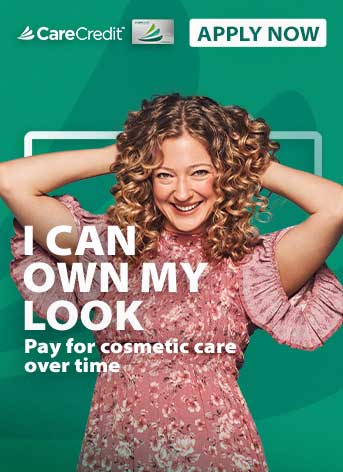Is your basic facial not giving you the results you want anymore? Have unwanted hair you'd like to remove? Decided you're done with those scars, tattoos or veins? Intense pulsed light, or IPL, may be a solution to consider.
What Is IPL Treatment?
Intense pulsed light (IPL) treatment is a non-ablative laser skincare treatment that uses high-intensity pulsed light to break down skin pigments and lighten or remove spots on the skin, improve the look of scars and broken blood vessels as well as remove unwanted hair.2
IPL vs Laser treatments
While IPL is similar to a laser skincare treatment, IPL uses multiple light wavelengths to stimulate skin rejuvenation while laser skincare treatments only use one wavelength. This allows IPL greater versatility to treat larger areas of skin for a larger range of concerns in a short period of time.3
What Can IPL Treat?
IPL is a good choice for treating a wide range of skin conditions from head to toe and from hyperpigmentation to tattoo removal. Common skin conditions and other concerns that IPL can be used to treat include:
- Wrinkles
- Age spots
- Sun damage
- Other discoloration/hyperpigmentation
- Varicose veins/broken blood vessels/spider veins
- Acne Scars
- Stretch marks
- Birthmarks
- Freckling
- Rosacea
- Dry eye
- Hair removal
- Tattoo removal
Although many conditions may require multiple rounds of treatment, IPL has been found to be effective for all listed above.2
Where on the Body Can IPL Be Used?
One of the other benefits of IPL is that it can safely be used on a various parts of the body—even in the eye! Patients suffering from refractory dry eye who tried other treatments without success found a 25-50% improvement in symptoms after an IPL treatment combined with meibomian gland expression.4
IPL can also be used to treat sun spots, aging spots, scars, or hair on these different body parts:
- Face
- Neck/Decollete
- Hands
- Eyes
- Legs
- Bikini Line5
IPL Safety and Risks
IPL treatments are safe for most individuals, skin types, and skin tones. However, there are some individuals who should avoid IPL, including those who are:
- Pregnant
- Taking blood thinners
- Susceptible to keloid scarring
- Have active acne breakouts
- Currently or recently have taken Accutane2
Potential side effects of IPL
While IPL generally has a shorter downtime than other cosmetic procedures, such as a deep chemical peel or a facelift, there can be potential side effects from an IPL treatment. The mostost common side effects of IPL include:
- Pain
- Swelling
- Discoloration
- Bleeding
- Infection
- Scarring
- Crusting6
IPL Treatments: What to Expect
Ready to give IPL a try? Once you've found a qualified provider for IPL, here are a few steps for how you can prepare before the procedure, what to expect during the procedure itself and what to know about the recovery process.6
Preparing for IPL
Before an IPL procedure, be sure to meet with a qualified provider to discuss your desired results and ensure that IPL is a good choice for your concerns. Patients will usually be asked to avoid chemical peels, excessive sun exposure, tanning beds or waxing for two weeks before IPL. Some service providers may also recommend avoiding aspirin or other anti-inflammatory medications for two weeks prior which can lead to excess bleeding during the procedure.
Procedure
Before an IPL procedure, you may be offered a local anesthetic or numbing cream. During the procedure itself, the provider will use a handheld device to administer the IPL treatment to the desired area. Patients may feel a snapping or pinching sensation during the treatment.2
Recovery from IPL
Don't expect to see immediate results after an IPL treatment. After the procedure, the skin may have a slight tingling sensation like a sunburn, mild swelling and redness for up to eight hours afterward. Your IPL provider may advise you to avoid makeup and harsh skincare products for a few days and will likely recommend a moisturizer or ointment to use while the skin heals.6
IPL Alternatives
If an IPL treatment won't meet your needs or you want to explore other options, you may want to explore chemical peels, microdermabrasion or other laser skincare treatments (such as Fraxel) as IPL alternatives for certain skincare concerns.
IPL Treatment Cost
IPL costs can vary greatly based on the area treated and the number of required treatments to achieve the desired results. According to the American Society of Plastic Surgeons, the average surgeon or physician fee for IPL during 2020 was $412. However, this rate does not account for other related expenses or multiple treatments that may be required.1
Does CareCredit Cover IPL Treatment?
Whether you decide on IPL or another skin rejuvenation path, the CareCredit credit card can help you pay dermatology procedure and treatment costs not covered by insurance.* Use our Acceptance Locator or download the CareCredit Mobile App to find a qualified skincare treatment providers near you who accepts the CareCredit credit card.
Author Bio
Kate Bayless is an experienced health and wellness freelance writer with 15 years of experience. Her work has appeared in Parents, Women's Health, Beachbody, and OpenFit.








